The welding involves using high heat to join the metals. During the welding process, welders are exposed to various risks.
One of the most common hazards is UV/IR light exposure. The best way to protect your eyes is using the welding helmet, but which one is correct?
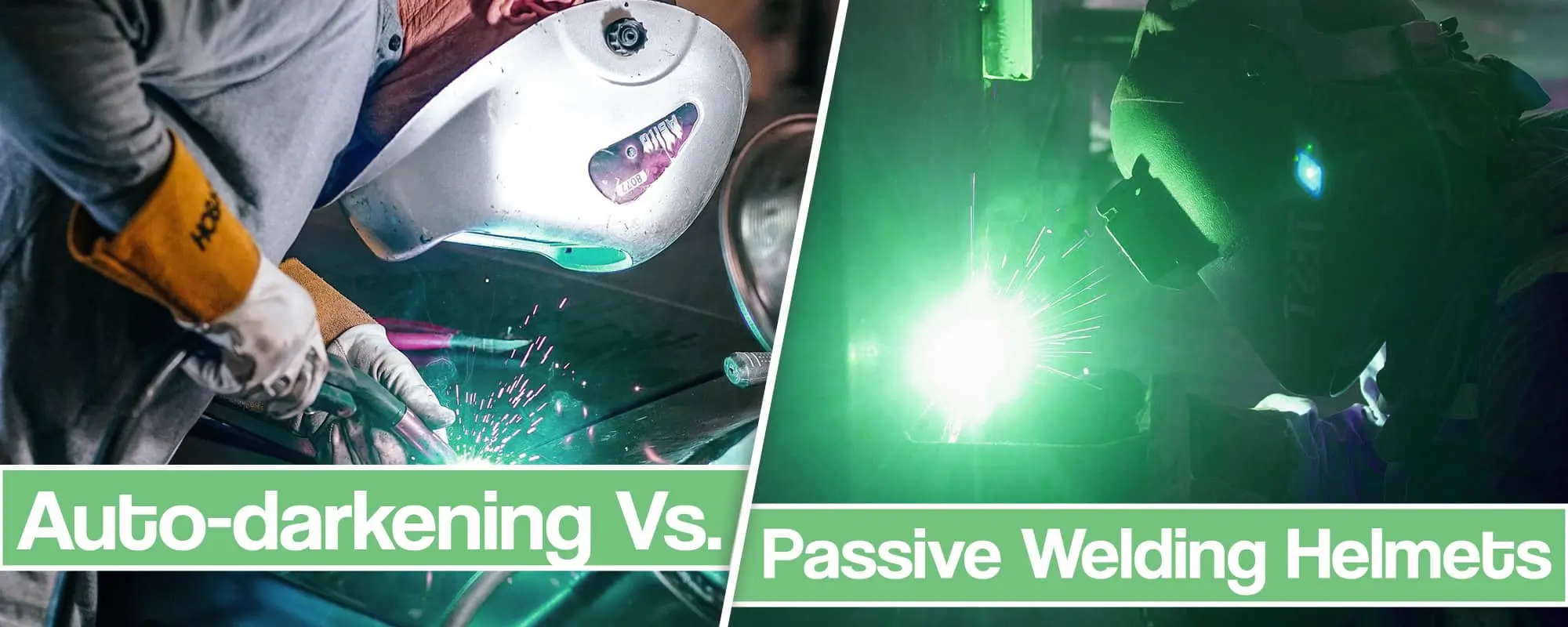
When browsing a market, you’ll notice there are auto-darkening welding helmets and passive welding helmets. You are probably wondering what the difference is?
Both passive and auto-darkening helmets will provide enough protection, but there are a couple of things you should know.
We made this article of auto-darkening vs. passive welding helmet, to point out the good and the bad sides of both types and help you make the right choice.
Auto-darkening Welding Helmet Explained
Auto-darkening technology was introduced to the market approximately 15 years ago. In the past, welders had difficulty seeing around the workshop with their passive helmets before striking an arc. Fixed shade offered enough protection, but you had to flip the helmet all the time.
The best part of an auto-darkening helmet is the clarity. Once you set up your helmet, you can move quickly around the workshop, and once you strike the first welding arc, the auto-darkening lens will darken automatically.
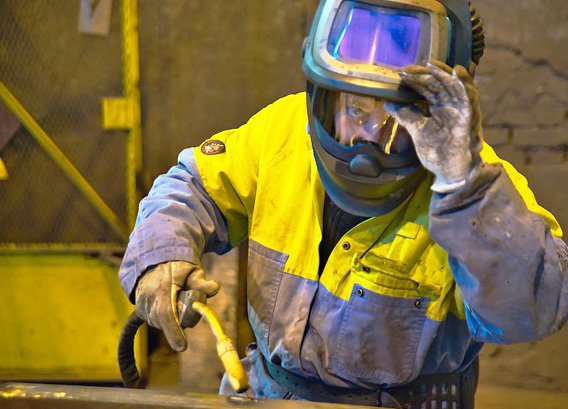
In addition, the good sides of auto-darkening welding helmets are various features and fine-tune settings. ADF helmets come with a filter lens, arc sensors, and battery packs. Arc sensors detect the light of the arc and turn on an auto-darkening function.
The more sensors there are, the better the ADF feature is. In addition, a lower number of sensors can be enough when you have a clear line of sight at your work.
How Do Auto-darkening Helmets Work?
Auto-darkening filter is made of specialized liquid crystal display, which is quite similar to the TV screen. Keep in mind that you need batteries to make it work. Most helmets use rechargeable batteries, some use solar power, and there are ones with both.
Once you activate the auto-darkening feature, arc sensors detect the change of light in the surrounding. You can choose the required shade manually, but some helmets will automatically adapt to the required ADF shade.
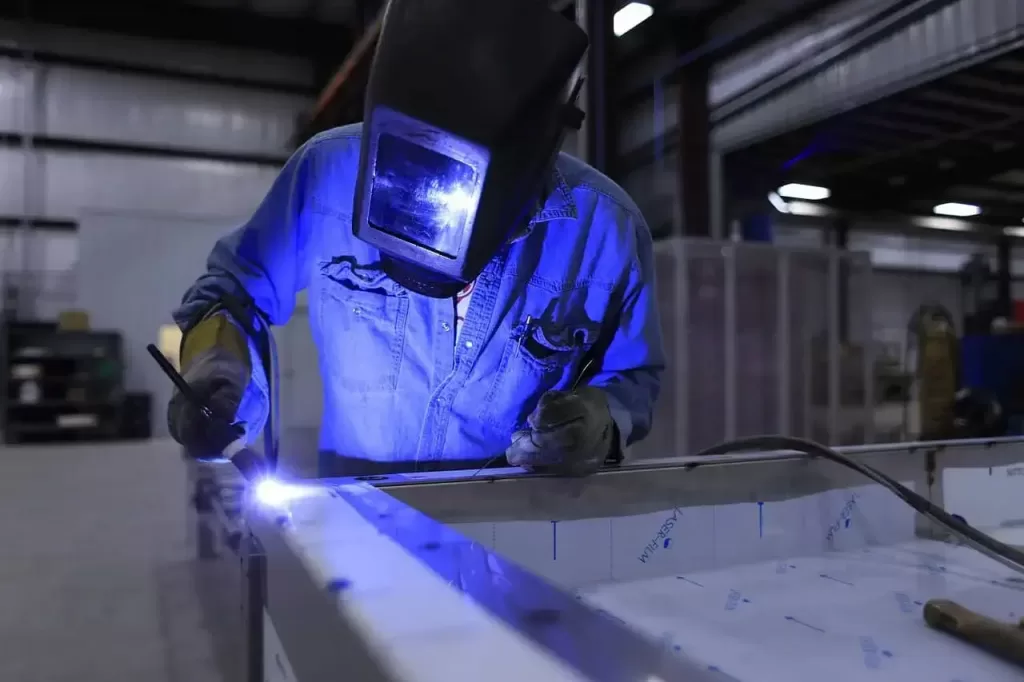
Remember that improved sensors can distinguish between sunlight, natural light, light bulb, and welding arc. Miller helmets even offer a unique feature that can detect the arc even if sensors are blocked.
One of the biggest concerns with auto-darkening helmets is a possible flash. Even if you set your sensitivity and delay controls properly, occasional arc flashes may occur, especially when dealing with cheaper helmets.
That’s why auto-darkening helmets have an infrared and polarization filter, which provide enough eye protection even when an auto-darkening function is not activated.
Auto-darkening Welding Helmets – Pros and Cons
Pros
- The auto-darkening lenses make it easy to use
- Improved optical clarity
- Improved ADF delay settings
- Offers IR protection even when ADF is not on
- Increases functionality since you don’t have to take it on and off all the time
- Protects your face and neck; some can fit respirators
- You can choose shade level
- Great for out of position work
- Provides better torch and arc control
Cons
- You need to check your batteries
- It can be a bit heavy due to all ADF parts and functions.
- Repairs, maintenance, and spare parts can be expensive
- Additional features can be expensive
Passive Welding Helmets Explained
In the past, a passive helmet was the only welding helmet model. However, with all the latest technology, many people choose more advanced, auto-darkening welding helmets.
Still, there are millions of welders today using passive welding helmets. However, some of the more experienced welders still prefer it over an auto-darkening welding helmet. The obvious difference between these two types of helmets is the passive shade, usually #10, that passive welding helmets offer.
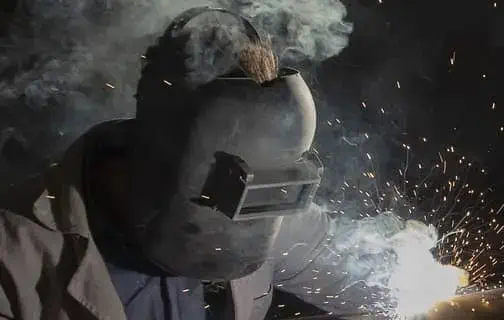
In addition, the standard glass lens is coated with IR and UV protection, high enough to keep your eyes safe. Passive helmets can be worn on the forehead or handheld. But the biggest drawback is the fact you have to take it off to inspect your weld. In addition, you don’t have to worry about flash, as they won’t fail you.
One of the good parts of these helmets is the clarity. Passive helmets offer great puddle clarity during the welding. In addition, they are super sturdy. However, they are much harder to use, especially if doing SMAW or Stick welding. Positioning and flipping the helmet can be challenging, especially during tack welding, but you can get used to it with enough practice.
How Do Passive Welding Helmet Work?
Since a fixed shade helmet doesn’t have any fancy features, you can use them quite simply. For example, even though it comes with a fixed shade level, you can always opt for changing it. In addition, some passive helmets can even be upgraded to an auto-darkening helmets.
Besides fixed shade, these helmets have a shell that protects your face during welding. You can choose to hold it in your hand, but you can always wear it on your head if your welding project requires both hands.
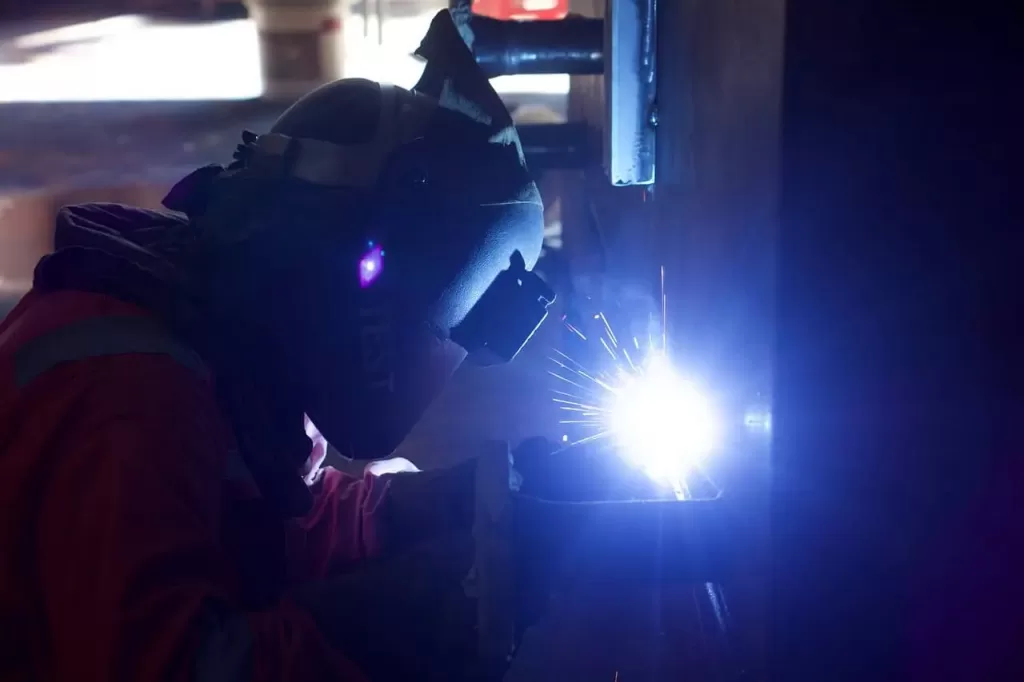
Passive Welding Helmets Pros and Cons
Pros
- Affordable and much cheaper than auto-darkening welding helmets
- Lightweight, since there are no additional parts and features
- Helmets provide enough face, head, and UV/IR protection
- Easy to repair, and spare parts are much cheaper
- They offer excellent weld puddle clarity
- You can replace the fixed shade lens, choose different welding shades, or even upgrade your helm.
- You don’t need batteries or solar energy to use a passive hood
- Easier to use in various types of welding
Cons
- There are no fancy features and adjustments and will remain dark all the time.
- Passive lenses won’t cover high or low amperage welding processes
- Manual positioning
- Not so great for beginners, since you need more time to get used to it
Auto Darkening Vs. Passive Welding Helmet
Auto-darkening filter is made of specialized liquid crystal display, which is quite similar to the TV screen. Keep in mind that you need batteries to make it work. Most helmets use rechargeable batteries, some use solar power, and there are ones with both.
Once you activate the auto-darkening feature, arc sensors detect the change of light in the surrounding. You can choose the required shade manually, but some helmets will automatically adapt to the required ADF shade.
Remember that improved sensors can distinguish between sunlight, natural light, light bulb, and welding arc. Miller helmets even offer a unique feature that can detect the arc even if sensors are blocked.
One of the biggest concerns with auto-darkening helmets is a possible flash. Even if you set your sensitivity and delay controls properly, occasional arc flashes may occur, especially when dealing with cheaper helmets.
That’s why auto-darkening helmets have an infrared and polarization filter, which provide enough eye protection even when an auto-darkening function is not activated.
| Auto-darkening Helmets | Passive Helmets | |
|---|---|---|
| Cost and Affordability | More expensive since it has all the unique features and ADF controls | Cheaper, but lack features |
| Power Options and Usage | Electronic, Manual | Manual |
| Weight and Comfort | Most are heavy because of the ADF mechanism | Lightweight |
| Replacement Lens and Maintenance | Expensive replacement lenses and repairs | Quick and cheap repairs |
| Size and Limitations | Most are bigger and hard to use in cramped space | Most are smaller and easy to use |
| Protection Offered | Portects eyes, face and neck | Offers the same protecion |
| Protective Shades | Various shade selection #6-13 | Fixed shade #10 |
| Arc Sensors | 2-6 sensors | No sensors |
| Ease of Use | Beginners might need some time to get a hang of it | Beginner-friendly |
| Visibility Offered | Great clarity before and during welding | Great puddle control, poor pre-welding vision |
Things to Consider When Choosing a Welding Helmet
Before you make your final choice, here are some factors you should consider. You need to worry about cost, purpose, power source, and safety standards.
Helmet Cost
Welding helmet cost is one of the essential factors you should think about when making a choice. You should browse through the market and try to find the helmets with the best value.
As we noted, helmets with auto-darkening lenses can be expensive since they come with various features. But, in addition, the features are worth the money.
Being on a tight budget does not mean you have to settle for less. There is various ADF helmet price range so that you can fit your safety gear to your needs. In addition, passive welding helmets are cheaper, and sometimes, they will be enough to satisfy your needs.
Plastic or Glass Lens
In addition, the price depends on the quality of the lenses. For example, plastic shades are usually cheaper, but they might distort the light and color profile.
Standard glass viewing lens will provide enough protection and excellent clarity, but replacements might be expensive. So before you purchase lenses, consider their price.
Purpose of Your Helmet
The primary purpose of your helmet is to protect your eyes from unwanted radiation, but sometimes you’ll need to make sure your helmet fits the needs of your welding applications.
You need a more advanced helmet with sensitivity controls and shade settings if you plan on welding at low amperage. Different shades will provide better control and enough for various applications, as you don’t need to worry about arc flash.
Power Sources
The welder needs to worry about the battery with the auto-darkening hoods, as they are essential for the ADF function. So even though there are safety measures, you need to check your battery levels before you start welding.
When making a choice, pay attention to the required batteries and charging options. Also, consider the price of spare batteries, and if you are using a solar-powered hood, make sure there is enough sunlight to charge it.
Safety Standards
Keep in mind that international safety standards should recognize all helmets. Both passive and ADF hoods should meet the required standards, as it is crucial to choose.
Welding helmets in the US should meet an industry-standard ANSI Z87.1. All the manufacturers should comply with the safety standards to keep the welders safe and avoid potential lawsuits.
In addition, The Occupational Safety and Heal Administration (OSHA) described the requirement for welding in specific workplaces. Therefore, all the helmets must comply with OSHA standards as well.
Both types of helmets have their advantages and drawbacks. Before making a choice, it would be best to set your goals. We suggest trying both auto-darkening and passive welding helmets, as that’s the best way of making a correct decision.
In the end, wearing proper eye protection is better than not wearing any. Still, you should fit your helmet to your needs. Wearing a comfortable helmet that offers enough protection will boost your productivity greatly.




